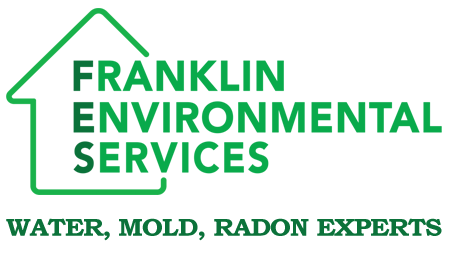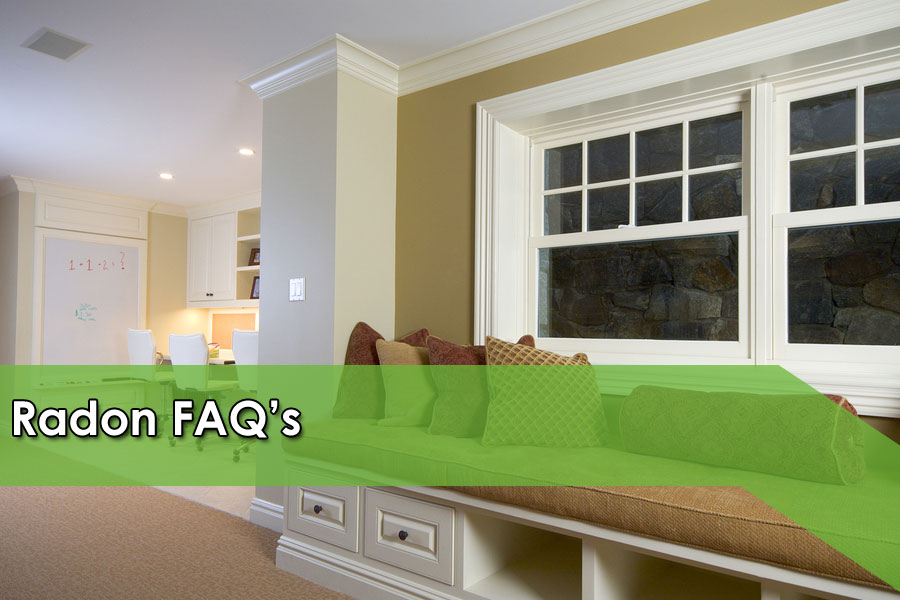Q: What is radon?
A: An odorless, colorless and tasteless naturally occurring radioactive gas that is in the air you breathe and the water you use for drinking, bathing and cooking. At high levels it is a serious health hazard. Radon is the second leading cause of lung cancer in the United States, second only to cigarette smoking. Radon is estimated to cause about 21,000 deaths in the United States each year. About 2,900 of these deaths occur among people who have never smoked. Radon is very unpredictable.
Q: How does radon get into my home?
A: It can seep into your home from the soil beneath your home, through dirt crawlspaces, cracks in the foundation and walls, floor drains, pipes and sump pumps. If your drinking water is well based, it can also be a source of radon in your home.
Q: I don’t live in a high radon area. Am I safe?
A: Even homes in areas considered at low risk for radon can have high radon levels. About 15% of homes in the U.S. have radon levels above the 4.0 pCi/L, the level at which the EPA recommends fixing your home. Although no absolutely safe level of radon has been determined, by following the EPA recommendation or the World Health Organization’s recommended level of 2.7 pCi/L, you will be helping to protect yourself and your family. The only way to know whether to fix your home is to test it for radon.
Q: I have a new home with no cracks or other openings. Do I really need to test for radon?
A: Radon is a gas, and therefore can seep through tiny cracks that you might not even see. It can get into finished or unfinished basements, and into new homes as well as old. You won’t know if it’s in your home unless you do a radon test.
Q: The builder said my new home is radon resistant. That means I’m safe, right?
A: Even if you have purchased a home with Radon Resistant New Construction (RRNC), unless you, the builder or a home inspector tested your new home for radon, that’s not necessarily so. Although the name Radon Resistant New Construction implies that the home resists radon, RRNC simply is the installation of radon system pipes without a radon mitigation fan. Without the fan, the home is “radon system ready,” but not resistant to radon entry.
Q: If radon is a health hazard, what are the symptoms?
A: Radon is a stealthy gas. You can’t see it, smell it or taste it, and it also gives you no warning that it is affecting your health. There are no telltale symptoms like rash or headache or fever. Radon does cause lung cancer, which often presents no symptoms until it is advanced. The only way to be safe from radon-related lung cancer is to test for radon and have the radon mitigated if the level is above 4.0 pCi/L.
Q: How can radon in my well water enter my home?
A: When you run water for drinking, cooking, bathing or when running your dishwasher or washing machine, radon gas escapes from the water into to the air, adding to the radon level of the air you breathe. The major danger of radon in water is inhalation; however, there is also a danger from ingesting it, which is believed to cause a small number of stomach cancers each year.
Q: What is a High Radon Level?
A: There is no truly safe level of radon exposure. Radon concentrations often are much higher in water than in air. The Safe Drinking Water Act Amendment of 1996 mandates the adoption of municipal guidelines. It is believed that the final maximum contaminant level for radon in municipal well water will be between 300 and 4,000 pCi/L. State recommendations for waterborne radon vary, so check with your state radon office for information. (See State Radon Offices)
Q: What’s the best method for testing for radon?
A: The best way to be sure your home is safe and protected from radon is to hire a certified radon testing professional like Franklin Environmental Services.

